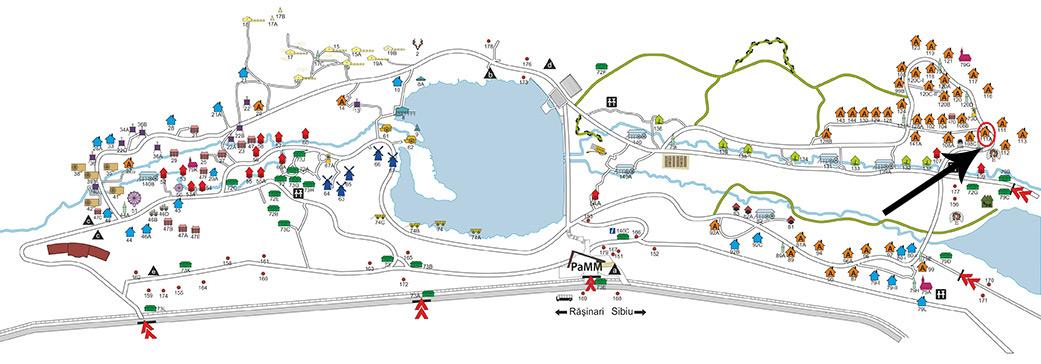Smithery from Fundu Moldovei, Suceava county

Name of the building in the museum in English:
Smithery from Fundu Moldovei, Suceava county
Name of the building in local language (as used in the museum):
Fierărie din Fundu Moldovei, județul Suceava
Local Language: Romanian
Type of building:
Rebuild of an original (building up the original building again, using original substance)
Museum where the building is presently located:
Complexul National Muzeal ASTRA (RO)
Please select extra information below:
The original building or its remains: Source and Inhabitants
Source Material
Name of the location: Fundu Moldovei, Suceava county | See Google Map below
Address: Fundu Moldovei (Colacu village) | Fundu Moldovei | Romania
Organisation responsible for in situ excavation:
Complexul National Muzeal ASTRA (RO)
Name of the person responsible for the excavation: Marius Florin Streza
Role of the person documenting: Curator
When the excavation took place: 2007-2008
Source(s): Technical report of Smithery from Fundu Moldovei, Suceava county (3,71 MB)
47.53979, 25.36281
Time and Inhabitants
The historical /archaeological time period of the original building is:
1930-1950
The original building date / date of first construction of the building is:
1938 AD
Is the information about the original building's owners / users / inhabitants known?
Yes
Full know names: Pop Petre
Occupation / profession: Blacksmith
Dates of occupation: 1938-2005
About the original building
The original building was:
Part of a settlement
If part of a settlement, what is the original building's environment:
Village
What was the name of the village?
Fundu Moldovei
The original function of the (original) building was:
Non-residential
If the original building was non-residential, the primary type was:
Workshop
Has the building's function of use changed through its history?
No
Extra Information
How did the museum obtain the original building (remains)?
The building was purchased
The original building was identified, classified or assessed by:
Marius Florin Streza
Year of assessment:
2007
Dismantling the original building
Year of dismantling: 2007
Description of the dismantling process:
For dismantling, initial surveys were carried out and each building element was given an identification code. After removing the shingles from the roof covering, the elements were dismantled piece by piece and transported to the museum.
Dismantling team member (primary):
Marius Florin Streza
Role of the person dismantling:
Curator
Components which were not translocated:
Component 1
Name of the component: shingles roof
Select material: timber - wood
The building in the museum: Basic facts and Construction process
The importance
The reason to present this building in the museum is:
The building represents a social status or position
Please explain about the social status or position?
The blacksmith was a very important person in everyday life of the village.
The original building was not translocated/the reconstructed building was build on the site of the archaeological feature
No

The location in the museum
Registration number / name / inventory number of the building:
AL 19224, Smithery from Fundu Moldovei, Suceava county, 111A
Location in the museum:
The building is in the metal craft area.
The building in the museum is: Stand-alone
Documentation of the Construction Process
Is the organisation constructing / rebuilding the building in the museum a RETOLD partner:
Yes
Name of the organisation conducting the construction / rebuilding:
Complexul National Muzeal ASTRA (RO)
Name of the person responsible for construction:
Marius Florin Streza
Role of the person within the organisation:
Curator
Documenting processes and objects:
Process 1
Field research and identification of the workshop with the interior objects.
Process 2
Field research for Identification of the interior objects.
Process 3
Purchase and reconstruction of the workshop.
Significant diversion
Is there a significant diversion in the construction from the original:
No
Are materials, techniques or tools diverging from historical/archaeological accuracy?
No





